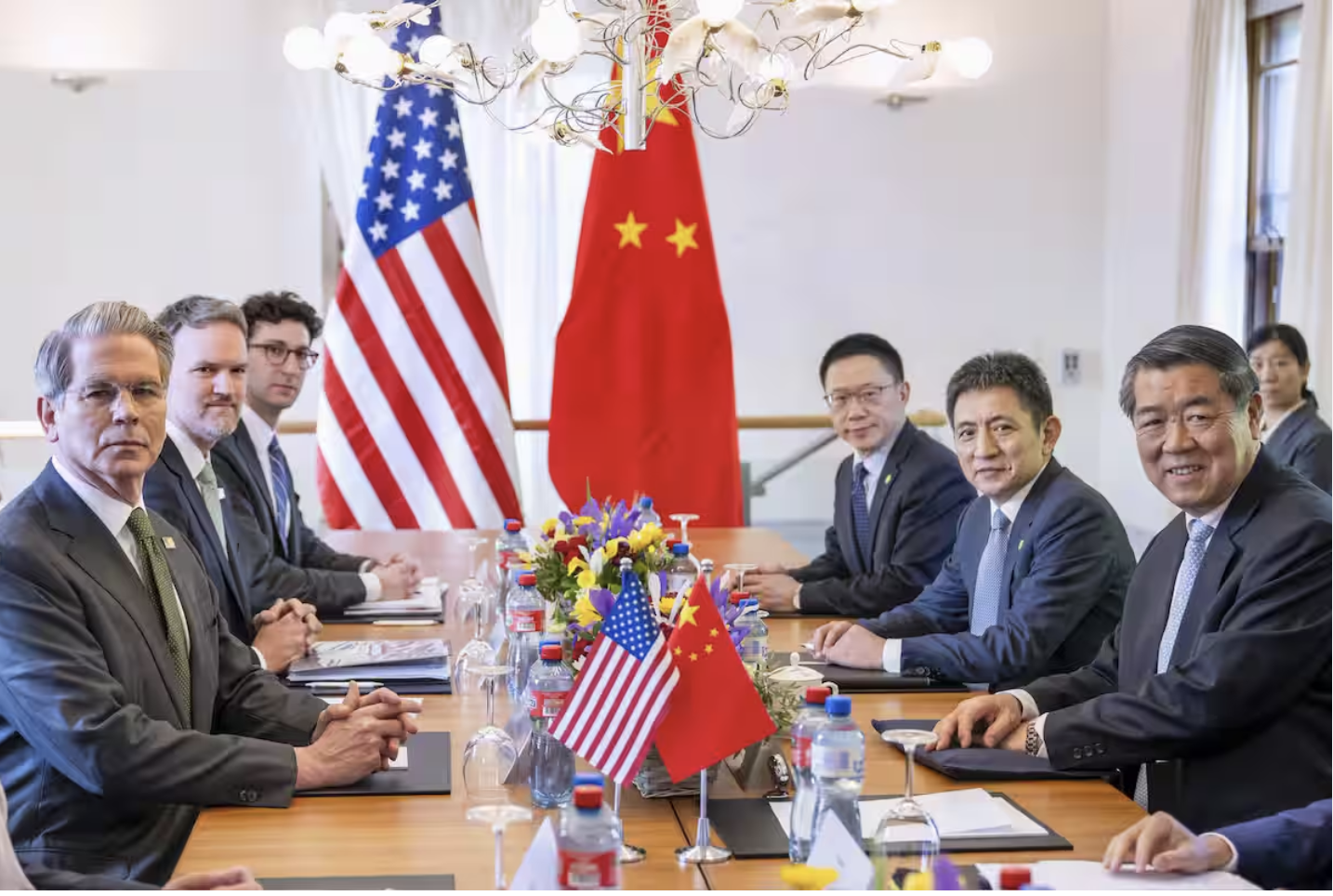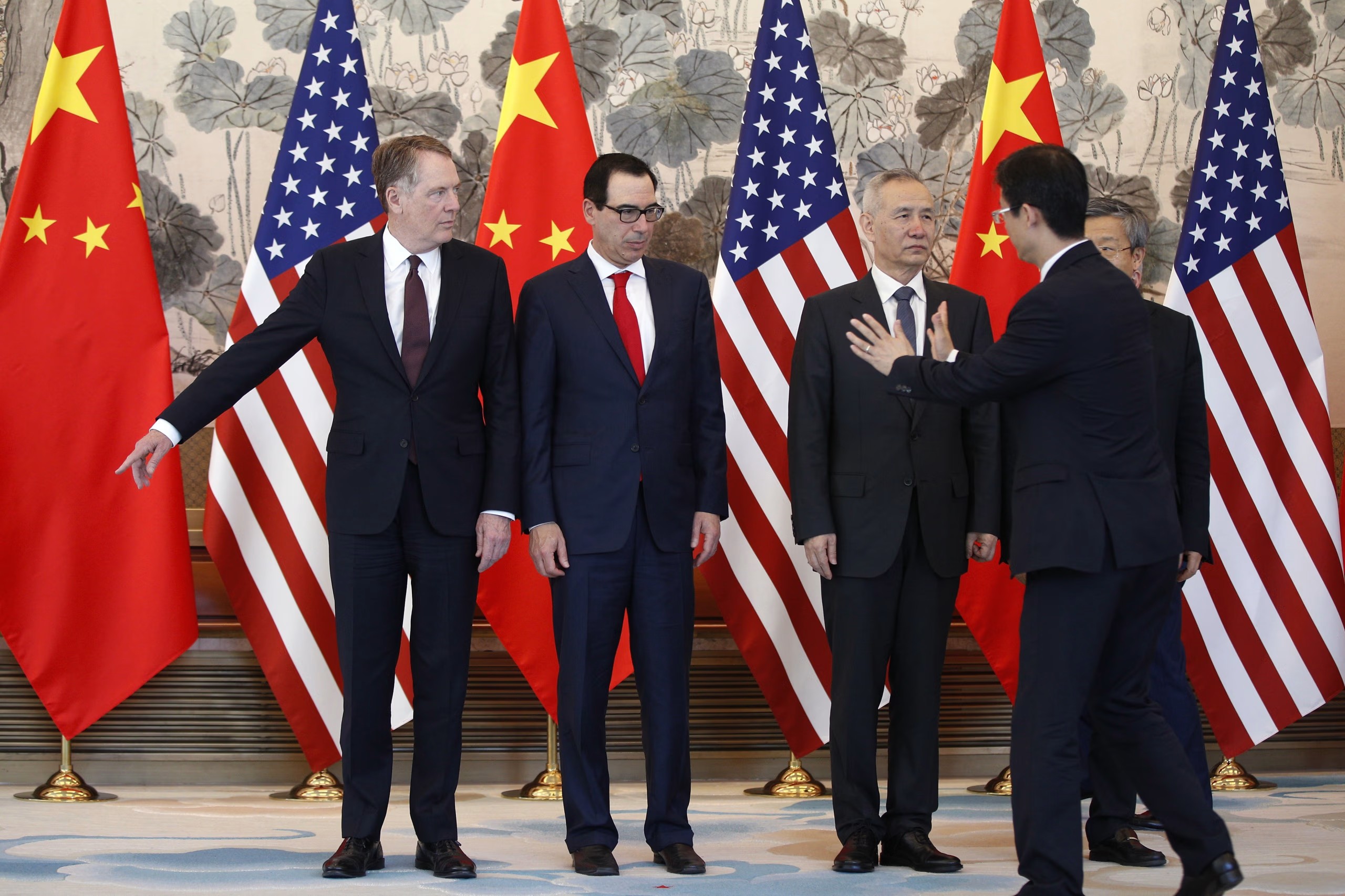U.S. and China to Reduce Additional Tariffs by 115%

TEXT : Peter Robertson
The United States and China held trade talks in Switzerland on May 10 and 11, and announced on May 12 that they had reached an agreement to reduce the additional tariffs imposed on each other. The U.S. currently imposes cumulative additional tariffs totaling 145% on Chinese imports—comprised of a 20% penalty for illegal drug control measures and a 125% reciprocal tariff (consisting of a 10% base rate and a 115% surcharge). By May 14, the U.S. will suspend 24% of the 115% surcharge for 90 days and eliminate the remaining 91%. Meanwhile, China also imposes a retaliatory tariff of 125% on U.S. goods. Similarly, by May 14, China will suspend 24% of this amount for 90 days, maintain 10%, and abolish the remaining 91%. However, China will continue to impose up to an additional 15% in tariffs on liquefied natural gas (LNG), coal, soybeans, and corn from the U.S. As a result, both the U.S. and China will effectively reduce tariffs by 115%.
Our firm had anticipated that the Chinese government would aim to negotiate a reduction of tariffs from 145% to 54% as a starting point. Therefore, the U.S. move to reduce its tariffs on China to 30% (20% for drug control and 10% base rate for reciprocal tariffs) in the initial talks came as a surprise. However, considering that 24% of the surcharge will be suspended for 90 days, the effective tariff stands at 54%, which aligns with our initial expectations.
On May 12, U.S. financial markets responded to the tariff reduction agreement with a “risk-on” sentiment. The Dow Jones Industrial Average rose 2.8% from the previous weekend, the S&P 500 gained 3.3%, and the Nasdaq Composite climbed 4.3% (see Chart 1). U.S. Treasury yields rose across the board, and the U.S. dollar strengthened against most major currencies. The dollar-yen exchange rate briefly hit 148.64 yen to the dollar, reflecting the dollar’s advance and yen’s weakness.

Looking ahead, the focus remains on the direction of U.S. trade negotiations with major partners. On May 12, President Trump stated that he plans to hold a phone call with Chinese President Xi Jinping over the weekend. Japan is also working to schedule a third round of ministerial talks later in May. Given the recent strong performance of major stock indices (see Chart 2), markets appear to be pricing in some degree of progress in trade talks.
However, many of the tariffs introduced under the Trump administration remain in place, and the economic impact on the U.S.—particularly on consumer spending and employment—will continue to be closely watched. If hard economic data begins to confirm a slowdown, it could be a negative signal for equity markets. Nonetheless, such a development might also heighten expectations for more flexible tariff adjustments by the Trump administration and for rate cuts by U.S. monetary authorities, potentially providing support for stock prices.
